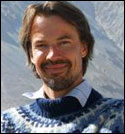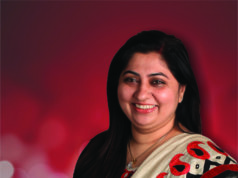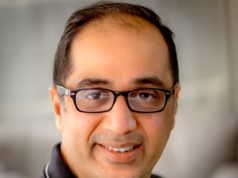 — Anne Feenstra, Architect and Owner, AFIR Architects, Kabul, Afghanistan, and Arch i Platform, Delhi
— Anne Feenstra, Architect and Owner, AFIR Architects, Kabul, Afghanistan, and Arch i Platform, Delhi
Anne Feenstra, a Dutch architect living and working in Kabul, Afghanistan,practices sustainable architecture with design philosophies based on innovative techniques andcontemporary architecture, while respecting traditionalskills and local building materials. With his designteams, Feenstra has developed community supported projects in both India and Afghanistan. An interview by Jibran Buchh.
To begin with, please share your outlook on the urban infrastructure of India in specific Mumbai?
For me it is difficult to make statements about this as I am not informed enough. What I can say is that the recent elaborate study ‘Open Mumbai’ has provided a dramatically increased insight in Mumbai.
The Study depicts the concern about the shrinking public places as the city expands this manifest in deteriorating conditions of physical open spaces of cities in India.
It further says that open spaces are “left-overs”, while construction and real estate turnover dominates land-use and development plans and policies. This is leading to the deterioration of the quality of life in our city.
When this study in elaboration will be combined with think-tanks like StudioX and the good work of KRIVIA, JJ College and others a lot of burning issues can be addressed. The other parallel process that I would recommend is a fundamental re-thinking of long term scenario’s for the city. These need to be tailor- made as Mumbai is a unique city.
With our team in Delhi we initiated this process ‘DELHi2050’ for the capital already at the end of 2010 and at present the Ministry of Urban Development wants to work on other cities too. If that is Bhopal2040, Chennai2060 or Mumbai 2050 or something else, we do not know yet, but this intention of MoUD is good news.
You have taken part of the Delhi 2050 process. Tell us more about it?
We are DELHi2050 ! It is a brainchild of arch i platform. Some of the international people that we have invited are now embarking on a business model that will hopefully generate concrete projects for their new commercial consortium. They would love to work on projects like the design of the mobility hub of Kashmiri Gate. The involved key parties in India, including Ashok Lall, Romi Khosla, I.M. Chishti, K.T. Ravindran etc. however all believe that the core of the solution for the city of Delhi, is in the inclusiveness of the process. The focus has to be the long term sustainability of the city; a healthy and livable Capital for all. We are continue-ing DELHi2050 with mainly Indian experts and stakeholders.
Why is it important that urban infrastructure development is undertaken at the project designing stage (before project commencement)?
Different than buildings, the impact on the city fabric of mayor infrastructure developments, is for a much longer time-span. This has partly to do with the huge level of investment and partly with the enormous impact of the new occupation of long, linear stretches of land. So if you build a tunnel or a metro line, thorough research for the long term impact on the city should be compulsory. A building can relatively easily be changed and adapted and/or removed over time.
What are the main challenges to sustainable urban infrastructure development? How can these challenges be eliminated?
Some cities in the world have been able to fundamentally improve after a large event came to the city. The Olympic Games in Barcelona was used to dramatically improve public space, public transport and transform several industry-related areas of the existing city. Somehow Delhi has not been able to do this, when the chance arose recently. But this does not mean it is too late. Even without an UNESCO title or Olympic Games, Delhi should have so much self-confidence based on its historical, cultural, economic, medical, educational, governmental, logistic significance that we should be able to look at scenario’s and solution that work for all inhabitants of the city.
Do you have any policy recommendations for sustainable and holistic urban infrastructure development?
- Architect Bimal Patel form Ahmedabad points out that the existing laws in India still have too many references to the planning methods used by the British and that a re-writing of these laws would make it possible to define a more inclusive, a more Indian way of planning cities. Architect Sudhir Vohra is working successfully on this issue for example in Dehradun. I think, I would agree with both of them that improving the urban planning laws is an important issue.
- One of the reasons why arch i platform was asked to present our current ideas to the National Capital Region planning board, the Secretary of MoUD and the chairman of the DDA, is because they all find it very difficult to actually consult the different people that actually live in Delhi. Autonomous organizations like IIT, SCE, JNU and SPA have been involved and are very supportive as this method we use is not anti-development, but demonstrating that a new method of development would also lead to a much saver and healthier city.
- Public seems to be one of the key words; Public space, public facilities, public parks, public transport, public health etc. Please note that this does not mean a greater centralization of systems, because the Western world is finding out how costly and non-efficient centralized systems for electricity and/or water are.
Tell us about the projects you are currently working on and those being executed?
We are presently working in three countries. India, Afghanistan and Nepal. In India we are working on several community based projects; one in Sikkim East (mainly residential), one in MP (Ecological Responsible Tourism project with the Gond tribes and the Forest Department). A very exciting project is a 380- year old fort with a surrounding village in Rajasthan were we just completed the concept for an inclusive design approach that involves the local people. Other projects take us to Assam East, Nainital, Ladakh and of course the next phase of DELHi2050 is coming up.
In Afghanistan we finished five Maternity waiting homes in different parts of the country for Unicef and we are working hard on the improvement of the National Museum in kabul. We also work on a residential project in Kabul for the European Commission. Since 2006 I also undertake restoration projects; the last one being the 200-year old, last remaining, historical city gate of Kholm in North Afghanistan.
In Nepal we presently focus on education and exhibitions. We just had our first very successful exhibition at ICIMOD’s knowledge Park were we highlighted ‘Sustainable Mountain Architecture’.











